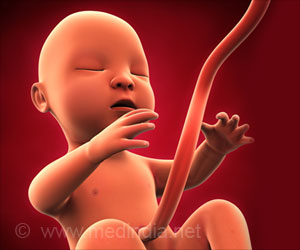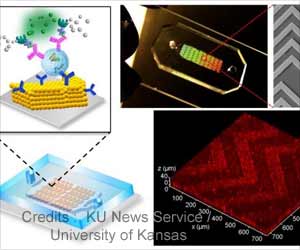Cryo-EM-on-a-Chip: New custom-designed substrates (Cryo-Chips) for use in cryo-Electron Microscopy could be a game changer in the field of medical research, reveals a new study.

‘New custom-designed substrates (Cryo-Chips) for use in cryo-Electron Microscopy could be a game changer in the field of medical research. These substrates enabled structural studies of mutated proteins formed in human cancer. Hence, these Cryo-Chips may be broadly used for both materials and life sciences applications.’





"The traditional type of grid hasn't changed much since the inception of cryo-EM, while materials science has changed vastly," said Deb Kelly, a professor of biomedical engineering at Penn State and director of the Center for Structural Oncology (CSO). "Our team, along with other colleagues in the field, had the idea to try new materials as a means to improve upon current practices."Problems with traditional carbon grids with holes include uneven surfaces when ice forms across the grid, which requires adjusting imaging routines many times; the grid materials expanding at different thermal rates; and failure of the specimens to find their way into the grid holes, wasting what is often limited samples.
"Only having to set initial focus parameters saves a tremendous amount of time during data acquisition," says Cameron Varano, research assistant professor in the CSO and the co-lead author on a new paper published in the journal Small. "The Protochips substrates are made from silicon nitride, a more rigid material than the carbon grids, which makes them less apt to have local deformities. And the wells in the chips can be customized for various ice thicknesses and applications."
With the new substrates, called Cryo-Chips, the researchers have the potential to get all their data on the samples in as little as an hour, as opposed to what would currently take days.
"This major technical advancement allows us to tackle more challenging questions," Varano says. "It's turning cryo-EM from an art into a science."
Advertisement
The second study, using much smaller and asymmetrical BRCA1 protein assemblies isolated from breast cancer cells, also showed enhanced contrast with stronger edge boundaries, making them much better candidates for automated imaging processing routines.
Advertisement
Kelly and Varano, who both recently moved to Penn State from Virginia Tech, are hoping to take these biomedically important samples to the next level as part of the mission for the new CSO, part of the Huck Institutes of the Life Sciences.
"With the newly-built microscope at the University Park campus and the Cryo-Chip tools in hand, we expect to transition our imaging work from high throughput to intelligent throughput," Kelly says. "What's really nice about our collaboration with Protochips is that it emphasizes the company/academic partnership. In that way, we can all grow together."
Source-Eurekalert














